Horses sporting blue eyes are not something you see every day, and you might be surprised at how much they capture your attention. Some people find these horses to be eerily captivating, while others find them a bit unsettling. Many myths and beliefs surround these animals because they truly are a special sight.
The truth is, Blue-Eyed Horses have no relation to light sensitivity or high temperaments. Many people will claim that they are around more often, but it’s very important to take into account what type of horse you’re talking about.
The trait of a horse having blue eyes is most frequently seen in horses with white markings or dilution coat colors such as palominos, cremellos, buckskins or perlinos. Researchers have discovered that the cream gene affects eye color in horses as well. These genes aren’t the only genetic factor involved in eye color, but they do contribute to its variation. While blue eyes are highly common in some breeds of horses, they can generally be found in most horse breeds.
1 Most Common Horse Breeds With Blue Eyes
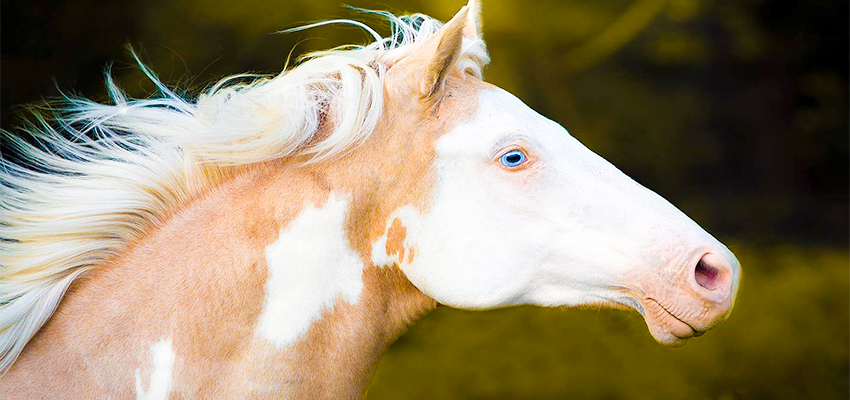
Horses are one of the most popular and beautiful animals on Earth, with a wide range of breeds that have different appearance, behaviors, temperament and histories. One of their most distinctive features is their large, expressive eyes. Blue eyes in horses are majorly often connected to coat colors. Eyes that are in shades of blue, typically found in horses with white and cream-colored coats and are often the most common type.
There are four breeds that are most commonly seen with blue eyes. The breeds typically include the Paint Horse, Quarter Horse, Appaloosa and Tennessee Walking Horse. Other breeds commonly seen with them include the Akhal Teke, Miniature Horses or Gypsy Vanner. Inbreeding appears to be the cause for blue eyes among Thoroughbreds and Arabians. There have been reports of an increasing number of equines with blue eyes, but this is still rare.
2 Role Of Coat Colors For Blue-Eyed Horses
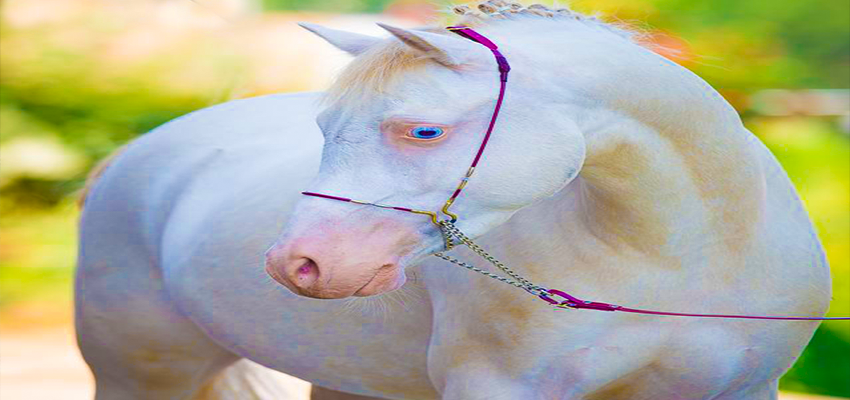
The shade of the horse coat color is more important than anything else for predicting whether a foal will be born blue-eyed or not. Most of the time, what we see is true. But not always! The most apparent example is that horses will always be born with blue eyes when they have double-dilute coloration. The most common type is a double-dilute coloration, like the cremello and perlino types. With body color diluted by the cream gene, horses often display these three base colors: chestnut, bay, and brown or some can be found with pink skin.
Although some single-diluted colors, such as palominos and buckskins, can also occasionally have a blue colored eye, but they’re not as common. A common misconception makes horses with base colors such as bay, chestnut, or black think blue eyes are nonexistent in these horses. Horses with these base colors typically have eyes that are blue but only in the extremes.
There are some colors that are associated with blue eyes. Although pinto and appaloosa colors are often associated with the likelihood of having blue eyes. Of course, the chances of this happening are highest if you happen to have a horse with a frame overo pattern, a splashed white pattern, or sabino pattern, then you’re likely to have a blue eye in your horse. Unfortunately, blue eyes are rare in horses. Blue eyes also can be seen on certain breeds where the markings that surround the eye spread white into the eye, like in “white-faced” horses.
3 Existence Of Blue Eye Horses Is Less Than 10% Throughout The World
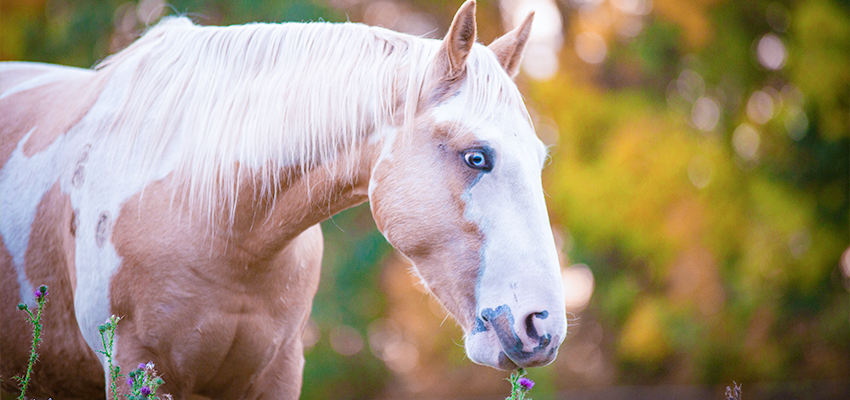
Blue-Eyed Horses are quite uncommon and they vary among the horse population. The percentage of horses with blue eyes is unknown because no study has been done to establish that yet. The most common breeds are likely to have a higher number of these horses, though.
Horses with blue eyes are much more common than humans, but their numbers are still lower in comparison to the whole population. It is estimated that there’s around 8-10% of the population who have blue eyes. Researchers struggled to uncover the origins of this phenomenon in horses for many years. It is still unclear as to when and how this process started. It is expected that scientists will eventually be able to understand how this phenomenon developed in horses. Scientists are likely exploring the topic, but have yet to determine a number for their findings. Scientists will then estimate a rough figure.
It really is no wonder that horses sport blue eyes. Horses are an animal who looks beautiful with stunning colors and would have been easier for predators to spot in the wild with a gleaming pair of eyes. There are a number of symptoms that reduce the chances for survival in a species and those symptoms are naturally selected out during development.
4 Common Misconceptions And Disorders Of Blue-Eyed Horses
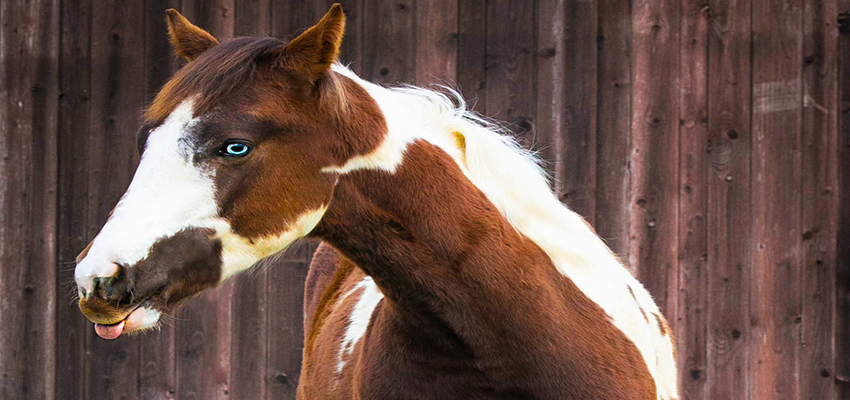
When it comes to medical conditions, assumptions are not just made by horse people, but other humans as well. People who work with horses often make assumptions about what the animals see and how they might be impacted. Some common misconceptions about horses with blue eyes are that they see the world differently and are more prone to eye-disease.
Many people believe that horses have been domesticated because of the light sensitivity of their eyes – but this isn’t always the case. While some people might think that since blue-eyed humans are much sensitive to light, this must be right for horses as well, Science is telling a different story on this one.
American Scientists have studied the medical records of two groups of horses, one with eye disease and the other without disease in the year of 2014. They noticed that the condition was proportionally common in both groups and concluded that horses with blue eyes were no more susceptible to eye disorders than those with darker eyes.
When it comes to eye health, we know that color plays a role in your horse’s chances for developing certain diseases. The study recognizes their detections to an identical perusal of horses with blue eyes. The scientists conclude that horses with blue eyes have a higher risk for coming down with ocular squamous cell carcinoma (SCC) than horses from any other breed such as brown eyed horses.
There is one exception to this rule. It’s the cancer of unpigmented skin around the eyes, which is called squamous cell carcinoma (SCC). Many horses with blue eyes also have unpigmented skin all over the side of their eyes; because of this, it’s usually connected with them. There are a few simple ways to prevent this condition from occurring. One of them is by protecting horses from UV radiation through fly masks and sunscreen. They can also be kept happy with plenty of shade during peak hours.
The myths and assumptions about blue eyes are clearly just a few coincidences. It seems evident that there is no truly scientific link between the color of someone’s eyes and their actions. A few coincidences might have led to this, but there must have been a few cases where horses had blue eyes because they were sick. It didn’t take long for people to start making rumors about these unusual combinations.
5 Role Of Melanin

The color of a horse’s iris is dependent on the amount of pigment, melanin present in their iris. The more melanin in their iris, the darker their eye color will be. A light-colored eye, such as blue, green, or gray, has less melanin in the iris.
Some horses and other animals have blue eyes because of a decrease in the pigmentation of their irises, which are responsible for color. Most of the time, darker eyeshadow comes from more pigments in the iris. If you have blue eyes, it’s most likely that the color comes solely from a reduced number of pigments in this structure surrounding your eye.
6 Are Horses With Blue Eyes Blind Or Deaf?

Horses with blue eyes have no more issues with their eyes than horses with other eye colors. It means they are not blind. These animals with blue eyes don’t have a diminished vision or any other negative characteristics that would affect their ability to function in the same way as all other horses do.They also have the same chance at living a long life as any other horse.
Multiple studies have been done on the prevalence of congenital deafness (not sensitive to noises) in some Paint Horses with blue eye color. Recently, research published in a 2019 paper revealed a genetic connection between the splashed white coat pattern, blue eyes, deafness and increased risk of deafness in this breed. These connections have led to more research on the possible cause of deafness.
7 Blue-Eyed Horses Sensitive To Light?

There is no difference in light sensitivity for horses with blue eyes whether the iris of their eye has a pigmentation change or not. Blue eyes are much less common in horses than they are in humans. Although the iris of a horse with blue eyes often shows decreased pigmentation, this doesn’t cause horses’ eyes to be more sensitive to light. Horses only become more sensitive to light when they have unpigmented skin around their eyes.
8 Some Other Facts About Horses With Blue Eyes
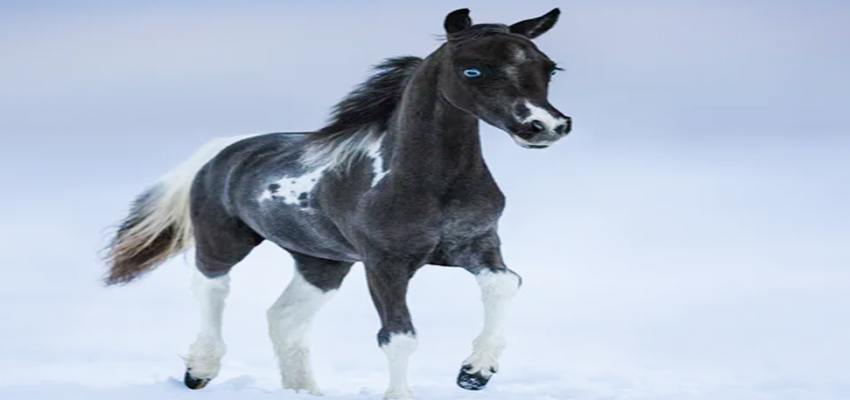
~ Horses have dichromatic vision, which means that horses see color as a combination of two primary colors, not as separate colors. So a dark-eyed horse does not see any differently to a blue-eyed horse – both can see the same color.
~ Paint horses are known for their heterochromia; it means it is more common in these horses—meaning that one of the horse’s eyes may be a different color than the other (mismatched eyes).
~ It’s not often that a single eye has different colors, but there are two rare conditions. The first well-known is called central heterochromia and second one is segmental where a single eye has two different colors.
~ The Blue-Eyed Horse Association (BEHA) is a nonprofit organization that registers horses with blue eyes, regardless of breed. They’re committed to the study and understand these animals on a deeper level and making it easier for the public to learn about them.
~ Horse colors at birth typically don’t come in just one shade. An individual’s coat color is directly correlated to the level of pigment in their eye color. Horses with coat colors like champagne will be born with greenish-blue eyes that become darker over time.
~ It’s easy to see the difference between the eyes of cream-colored horses and those of white marked horses. The blues that are apparent in the eyes of cream colored horses are lighter than those of horses with white markings.
9 Ocular Squamous Cell Carcinoma (SCC)

Eyes are very important to horses, and the Ocular Squamous Cell Carcinoma is an eye-related cancer that affects many horse breeds and It’s the second most common form of cancer in horses and usually happens in their eyes and eyelids, which can be frightening for those who care about their horse. Factors linked to UV exposure, such as sunlight or ultraviolet radiation, increase your horse’s risk for developing this type of cancer (SSC).
As a horse hobbyist, you should always be aware when it comes to skin cancer. SCC is usually caused by a number of factors, but it typically manifests as skin tumors at the junction of the skin and eye. In some cases, individuals’ risk of developing SCC goes up significantly if they don’t have pigmented skin within their eye.
Horses have a striking skin color and should be looked after to ensure they stay healthy. Horses with blue eyes often have pink skin surrounding their eyes, making them more prone to sun damage. This, in turn, can lead to ocular squamous cell carcinoma which can cause more panic.
Despite the popular notion that horses with blue eyes are more susceptible to developing diseases like cataracts than horses with brown, hazel, or green eyes, data indicates something else. Some researchers have suggested that blue-eyed horses are not more likely to develop diseases that affect their vision than those with other eye colors.
By protecting your horses from sunlight, you can reduce the risk of sun-burning and skin cancer. For example, during peak light hours, keep UV-protective fly masks on them.





